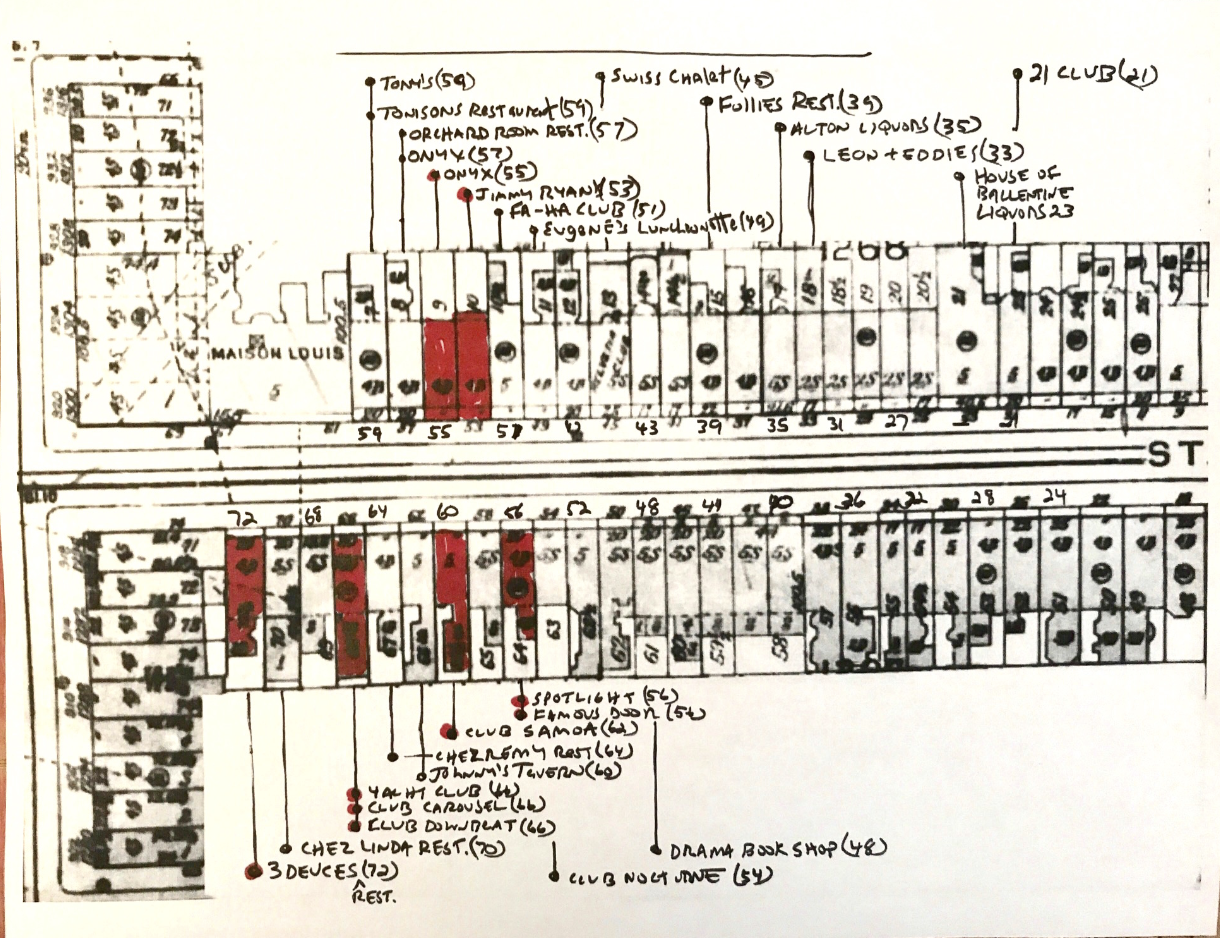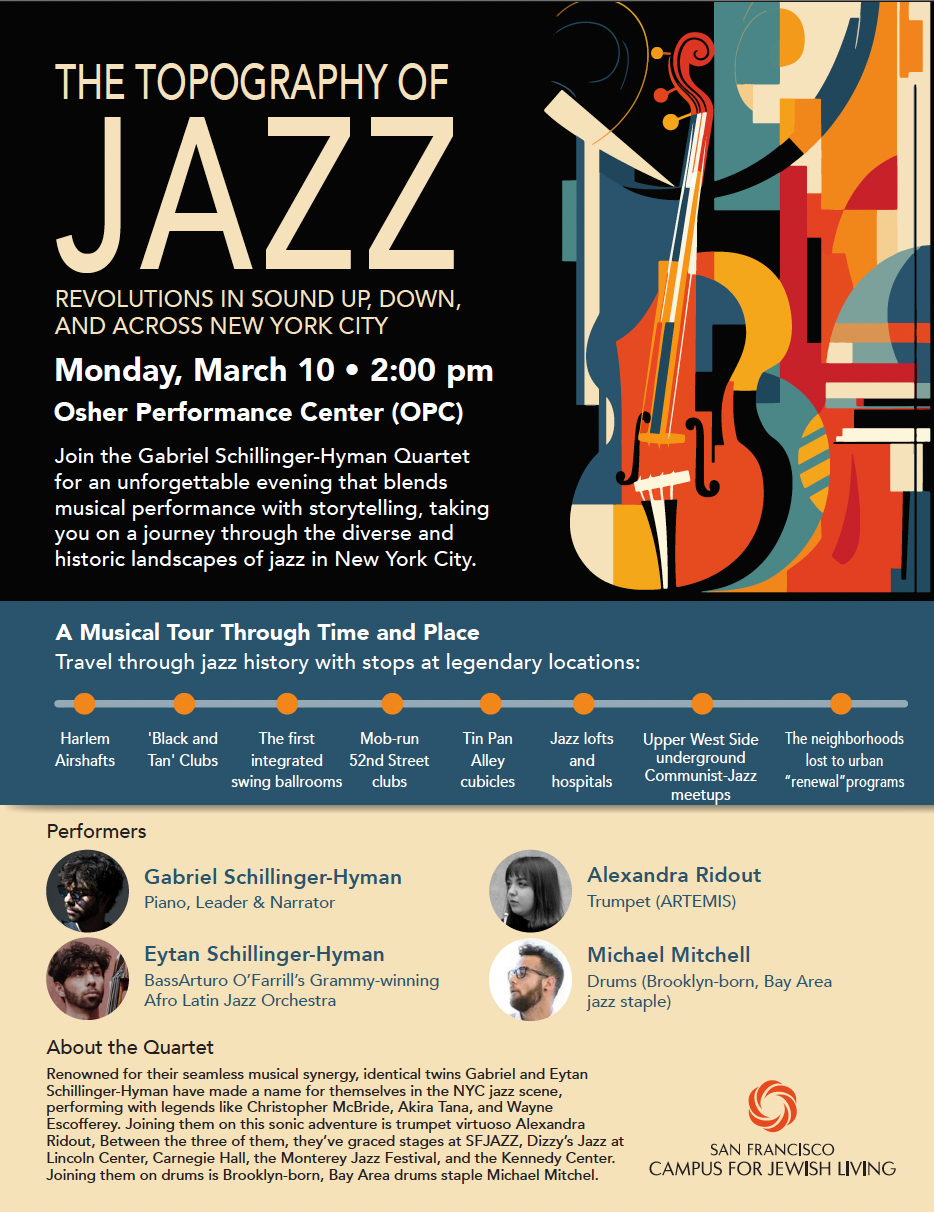
THE TOPOGRAPHY OF JAZZ
— Revolutions in Sound Up, Down, and Across New York City —
Originally a 5 week series (easily adaptable to create short performances), this program celebrates the rich tapestry of jazz in New York City. A musical tour through time and place transports audiences to Harlem airshafts, Black and Tan Clubs, the first integrated Swing ballrooms, mob-run 52nd street clubs, Tin Pan Alley cubicles, jazz lofts, hospitals, orphanages, asylums, basements, underground Communist-jazz hangs, and more. The program also seriously investigates the impacts of New York’s “Urban Renewal” projects on primarily Black and Puerto Rican jazz musicians and their families, and dives into the topographical history of ‘Manhatta’, originally molded by the Lenape.
The 5-week New York City premiere of "The Topography of Jazz: Revolutions in Sound Up, Down, And Across NYC" featured performances by Gabriel Schillinger-Hyman with internationally acclaimed guest artists Erena Terakubo (Jon Faddis All-Star Big Band, Kenny Barron Quartet, Mingus Big Band…etc), Anthony Hervey (Jazz at Lincoln Center Orchestra, Michael Bublé…etc), Kate Kortum (Jazz At Lincoln Center Orchestra) and Ryan Hernandez (Jazz At Lincoln Center Jazz Orcehstra Tony Bennett tribute). Watch highlight reel.

5-Week Breakdown
(easily adjustable for one-off performances)
Week 1: The Harlem Renaissance From the Biggest Ballrooms to the Smallest Air ShaftsAn exploration of Harlem and Sugar Hill from the early 1920s-40s, this week examines historic music venues, ballrooms, rent parties, and actual apartments (and their airshafts) that lay the groundwork for a renaissance of swing music and dance. Listeners can expect a performance of various styles of music (Harlem Stride, swing, ballads, latin…etc) by the great Duke Ellington, Billy Strayhorn, Louis Armstrong, Count Basie, Chick Webb, Benny Goodman, Frank Sinatra, Ella Fitzgerald, Willie (The Lion) Smith, and more, interspersed with historical interludes.
Week 2: The Birth of Bebop & The Rooms Where It Happened — Bedrooms, Speakeasies, & The Iconic 52nd st. Jazz ClubsA new era of jazz (1940s-60s) marked by highly intellectual melodic and improvisatory structures blows the scene wide open, exposing a New York City that is deeply fragmented along racial, socioeconomic, geographical, generational, and musical fronts. This week covers the sounds, the artists, their homes, and the venues that would forever alter the course of music on the planet. Listeners can expect a deep dive into the stories and music of Charlie Parker, Dizzy Gillespie, Miles Davis, Thelonious Monk, Bud Powell, John Coltrane, and more.
Week 3: Tin Pan Alley & The Great American Songbook Named after its cacophonous sounds, this week features a small, yet culturally gigantic sliver of land on West 28th between 5th and 6th avenues where luminaries such as George and Ira Gershwin, Harold Arlen, Irving Caesar, Vincent Youmans Irving Berlin, Cole Porter, Edward Heyman, Jerome Kern, Fats Waller, and many more, contributed to the making of what’s now referred to as “The Great American Songbook.” A discussion of the geography and era reveals a dichotomous Tin Pan Alley that’s both instrumental in establishing New York City as the cultural capital of performance, production, and publishing, as well as responsible for building an entertainment industry that often rewarded quantity over quality.
Week 4: Before Lincoln Center, The October Revolution in Jazz, & Other Secrets of the Upper West SideThis week dives into the topographical history of ‘Manhatta’, originally molded by the Lenape and investigates the impacts of New York’s “Urban Renewal” projects on primarily Upper West Side Black and Puerto Rican jazz musicians and their families. Sites and sounds visited this week originate in San Juan Hill clubs like the Jungle Café and the UWS’ Cellar Café, known for is free jazz performances and midnight panel discussions.
Week 5: The Shape Of Jazz To Come: Lofts, Bridges, Hospitals, Trains, and FlophousesThis week celebrates some of New York's most unconventional locations for jazz inspiration, composition, and performance. From lofts that created community and fostered creative experimentation, to bridges where artists like Sonny Rollins honed their craft, to hospitals, flophouses, and mansions that offered refuge and/or free rehearsal space, these strange environments became the breeding grounds for the most cutting-edge, creative work in jazz.
